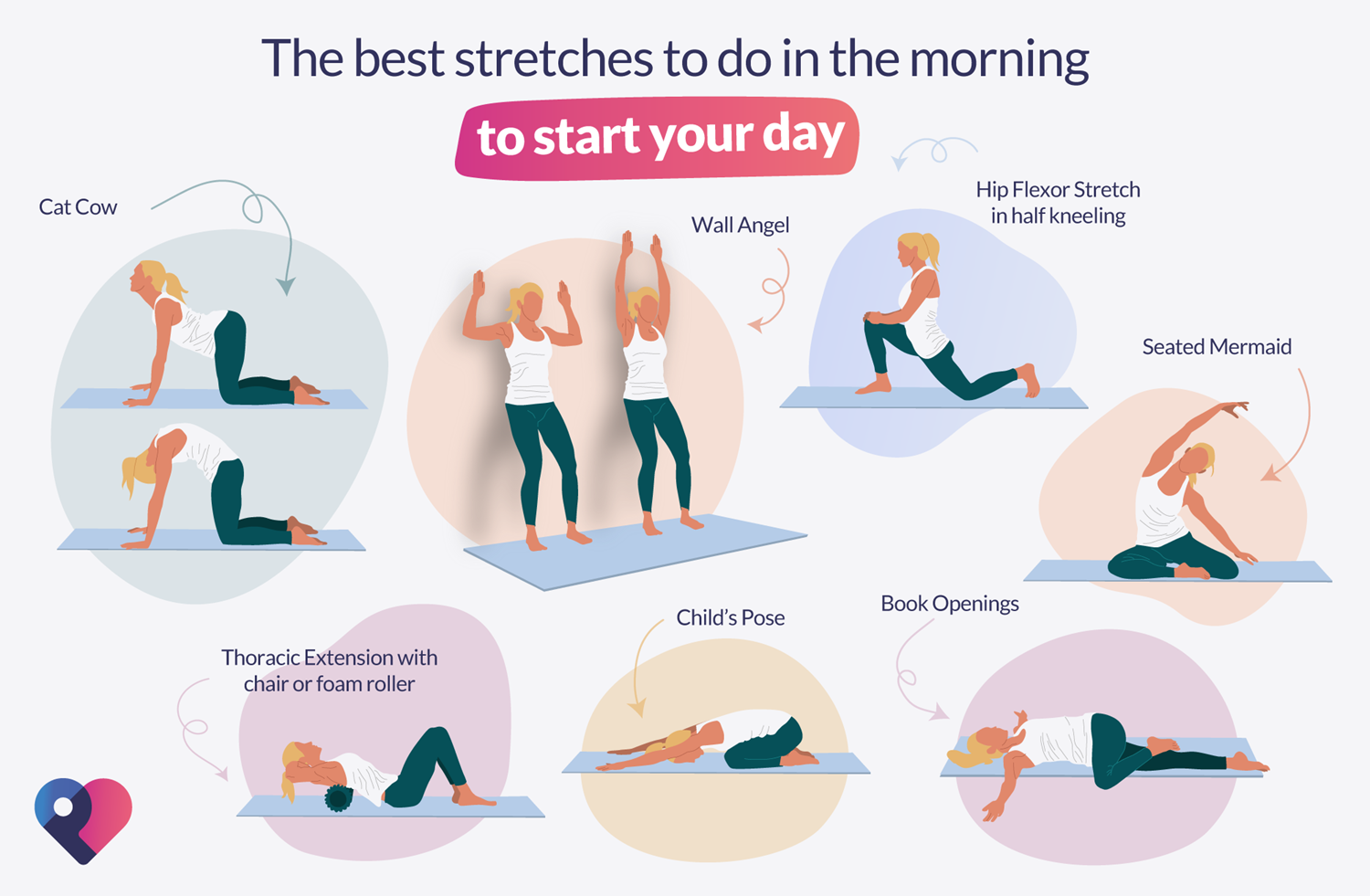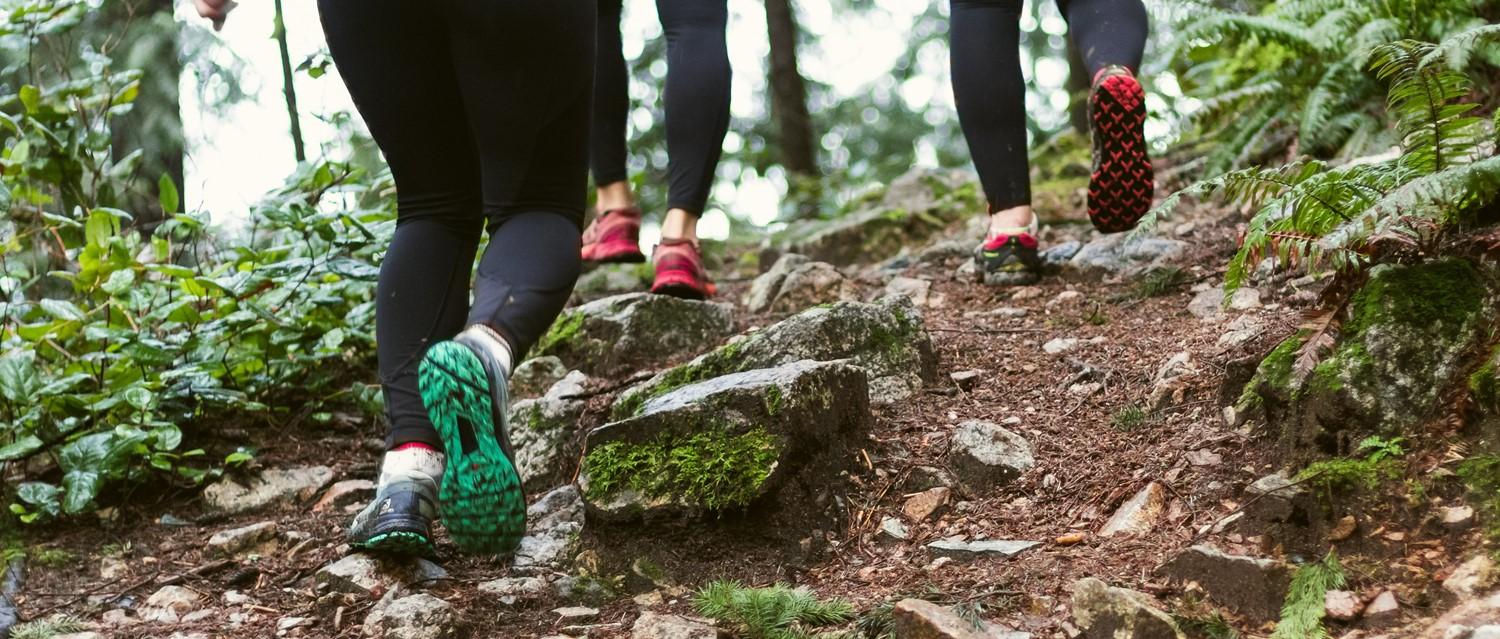
7 morning stretches to get you ready for the day
Peer reviewed by Dr Krishna Vakharia, MRCGPLast updated by Victoria RawLast updated 10 Dec 2024
Meets Patient’s editorial guidelines
- DownloadDownload
- Share
- Language
- Discussion
Most of us love the feeling of stretching first thing in the morning. However, chances are, you don't put much thought into what stretches you do. But did you know that there are specific stretches that will start your day off on the right note?
In this article:
Continue reading below
Why is it good to stretch in the morning?
Helen O'Leary, physiotherapist and Pilates instructor, Complete Pilates, explains that gently stretching after you wake up is important since you are inactive for a long period of time while sleeping.
"A lot of people feel stiff or potentially sore in their joints and muscles when they wake up," she says. "Stretching has been shown to increase blood flow to muscles and joints, which can subsequently improve the feeling of stiffness and discomfort."
Stretching is a way of preparing muscles and joints for more dynamic movement and increasing flexibility - hence why it's recommended before exercising.
But you don't need to be starting your day with a workout to reap the benefits of a good stretch. Regardless of what you're going to be doing during the day, a solid morning stretch routine can prepare your body for general movement, whether that's rushing around the office or playing with your children.
O'Leary outlines some key benefits your body can gain from regular stretching.
Improving posture
Good posture relies on your joints' ability to reach the ideal position. Therefore, flexibility and range of motion are essential for supporting good posture.
"If you are moving from your bed straight to your work desk, having a morning stretching routine can be a great way to reduce postural-related aches and pains that you may get from large periods of inactivity," says O'Leary.
Relieving stress
Stretching is also a way to calm the mind. A morning stretch generally involves slow movements and encourages you to focus on one area of your body at a time, while taking deep breaths. Starting your day off with this practice can help you head into a busy day feeling at ease, and empowered, with reduced anxiety.
How long should you stretch for?
O'Leary says how long you should spend stretching depends on the goal of your stretching and the type of stretching you choose to do.
"If you don't practise stretching often enough, you probably won't see an adaptation in your muscles and range of motion," she explains. "To achieve meaningful results, it is recommended to stretch for shorter periods regularly throughout the day, or a longer period of 20-30 minutes 3-4 times per week."
Continue reading below
Should you stretch at night-time as well?
Stretching in the evening offers many of the same benefits as stretching in the morning. If you have a desk job, stretching before bed can help to relieve tension built up in your body during sustained postures throughout the day. Equally, if you have an intense labouring job, stretching can help with muscle recovery.
7 morning stretches
The following morning stretches are easy to do and can be done from the comfort of your own home - even your bedside. You can incorporate equipment for your morning stretch routine, but it isn't mandatory.
O'Leary recommends holding or performing the movements for about 30 seconds, repeating each one 3-4 times - per side where necessary.
The best morning stretches

Continue reading below
Cat Cow stretch
O'Leary says this stretch can help thoracic (middle) and lumbar (lower) spine mobility.
"These are important not just for the function and flexibility of your spine," she says. "But also for other joints that attach to those areas or are directly impacted by their function - such as your shoulders and hips."
How to perform this morning stretch
Get on all fours.
Tuck your pelvis in so that your tailbone is tucked under, and your pubic bone comes closer to your navel.
Let the movement go through the whole spine so your back arches up and your head looks down.
Reverse the movement so your tailbone lifts towards the ceiling and your chest is pushing forwards.
Book Openings
This is a rotation stretch for your spine and the front of your shoulders. It is especially useful for people with upper back and neck tightness, or if you often find yourself hunched over while sitting.
How to perform this morning stretch
Lie on your side.
Slide your top arm along your bottom arm and turn your chest to the ceiling.
Open out the top arm to increase the stretch in your spine and chest.
Keep your hips and legs straight, facing forwards throughout, and your head supported.
Hip Flexor stretch in half kneeling
This is a morning stretch for the muscles at the front of your hip and thigh, which can become tight after sitting for a long time.
How to perform this morning stretch
Set up in a half kneeling position - one knee on the floor, the other foot on the floor in front.
Tuck your pelvis under, feeling the stretch on the front of your hip and thigh.
Take your pelvis forwards to feel more of the stretch - but don't lose the tuck.
Add in the arm lift to increase the stretch and include your torso and upper body.
Child's Pose
"Child's pose helps to relieve tension in the back, shoulder blades, and chest," says O'Leary. "It is also a great position to practise relaxed breathing in."
How to perform this morning stretch
Kneel on the floor with your knees wide and feet together.
Rest your palms on the floor in front of you.
Lower your torso between your knees, extending your arms above your head with your palms facing downwards.
Relax your shoulders.
Reach your hips back towards your heels.
Breathe deeply into the rib cage and try to release tension each time you breathe out.
Seated Mermaid
This is a typical Pilates exercise that can be done easily at home with a desk or normal chair. This stretch is useful for your upper back and to stretch out the side of your body.
How to perform this morning stretch
Sit in your chair or stand with your feet hip-width apart.
Extend your left arm above your head and reach up and out of your pelvis.
Start to reach over to the left until you can feel the stretch along the right side of your torso.
Hold the stretch as you breathe into your rib cage on the right side before returning to your starting position.
Repeat on the other side.
Thoracic Extension with chair or foam roller
"This exercise helps to extend your upper back, especially thoracic flexion, which is a position people spend a lot of time in when sitting," O'Leary says.
How to perform this stretch with a chair
Sit tall at the back of the chair.
Reach your hands behind your head for support.
Reach tall and lean back through your upper back.
Maintain the lower back in neutral - with natural curves intact and good alignment.
Using a foam roller
Lie on your back.
Position the roller under your thoracic spine (middle section).
Support your head with your hands as above.
Reach your upper back over the roller.
Maintain the neutral spine in your lower back.
Wall Angel or Goalpost stretch
According to O'Leary, this stretch targets your upper back and shoulders.
"It is great for stretching out chest muscles, but also helps to strengthen upper back muscles," she says. "It's a good movement to try if you notice your shoulders rounding at the front while you sit."
How to perform this stretch
Stand with your back flat against a wall, with the back of your head against the wall too.
Extend your arms to create a 'T' shape against the wall.
Bend your elbows at a 90° angle.
Move your arms down gently, creating a 'snow angel' shape, keeping them against the wall.
See how high you can lift your arms.
You can also do this stretch lying down on your back along a long foam roller, trying to keep your hands and elbows close to the floor.
Tips for stretching safely
Approach a new stretching regime slowly and gently.
Progress at your own pace and don't force your body into unnatural positions, beyond flexibility.
Build up your regime gradually to prevent injuries.
Focus on your breathing throughout.
Speak with a personal trainer or fitness expert if you have questions prior to stretching.
Consult your doctor before taking up strenuous exercise if you have a long-standing health condition.
Patient picks for Exercise and physical activity

Healthy living
How to deal with a fear of judgement whilst exercising
Life under lockdown has taken its toll on many of us. The lack of routine, exercising less, comfort eating and the stress of living through a global pandemic have affected us both mentally and physically. Exercise can help us feel better, but this can be easier said than done if you're feeling self-conscious. So what can you do if you're worried about being judged?
by Lydia Smith

Healthy living
How to embrace fitness after 50
You already know it's worth making exercise a priority. But, if you're over 50 and haven't laced up your trainers since secondary school PE class, it can be a real struggle to get going. We spoke to the experts about the health benefits of taking up exercise after 50, and how to make sure your shiny new gym membership doesn't go to waste.
by Sarah Graham
Continue reading below
Article history
The information on this page is peer reviewed by qualified clinicians.
Next review due: 10 Dec 2027
10 Dec 2024 | Latest version
7 Sept 2022 | Originally published
Authored by:
Emily Jane Bashforth

Ask, share, connect.
Browse discussions, ask questions, and share experiences across hundreds of health topics.

Feeling unwell?
Assess your symptoms online for free
Sign up to the Patient newsletter
Your weekly dose of clear, trustworthy health advice - written to help you feel informed, confident and in control.
By subscribing you accept our Privacy Policy. You can unsubscribe at any time. We never sell your data.